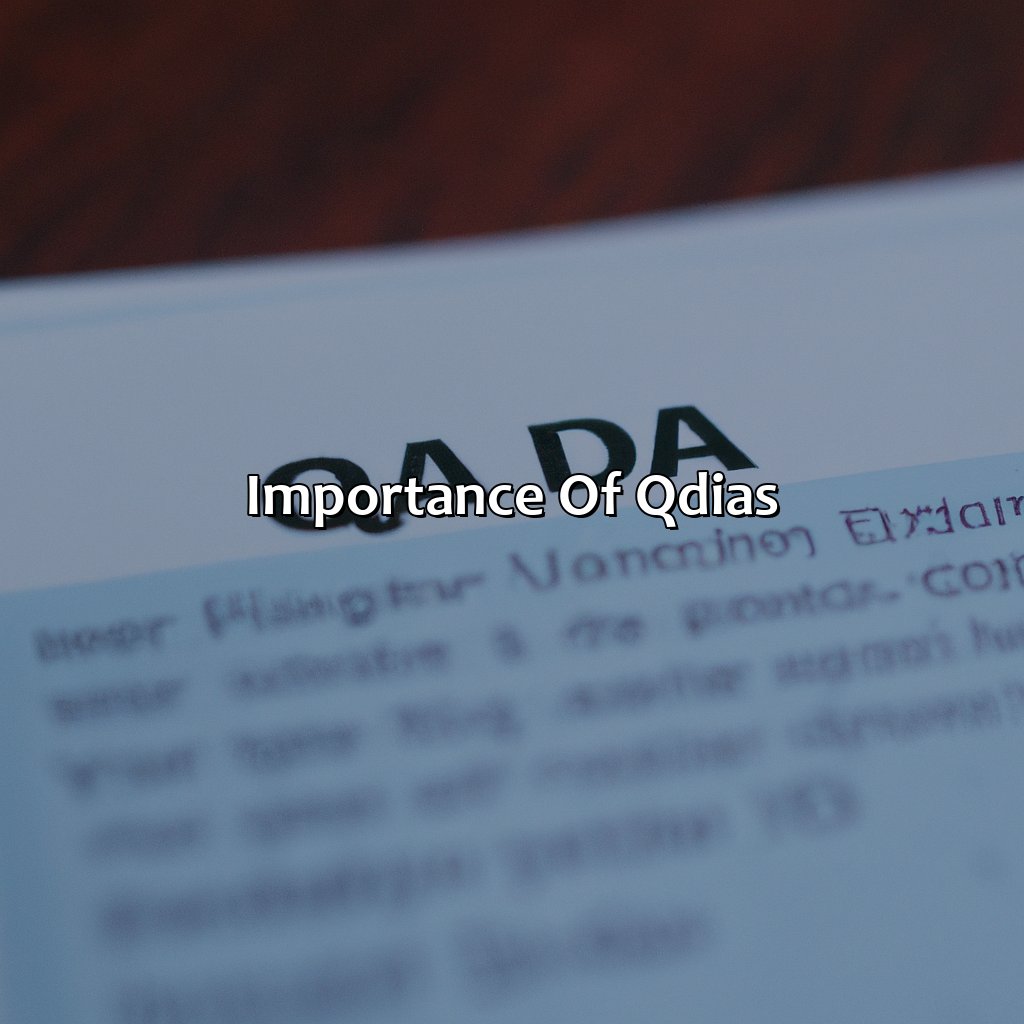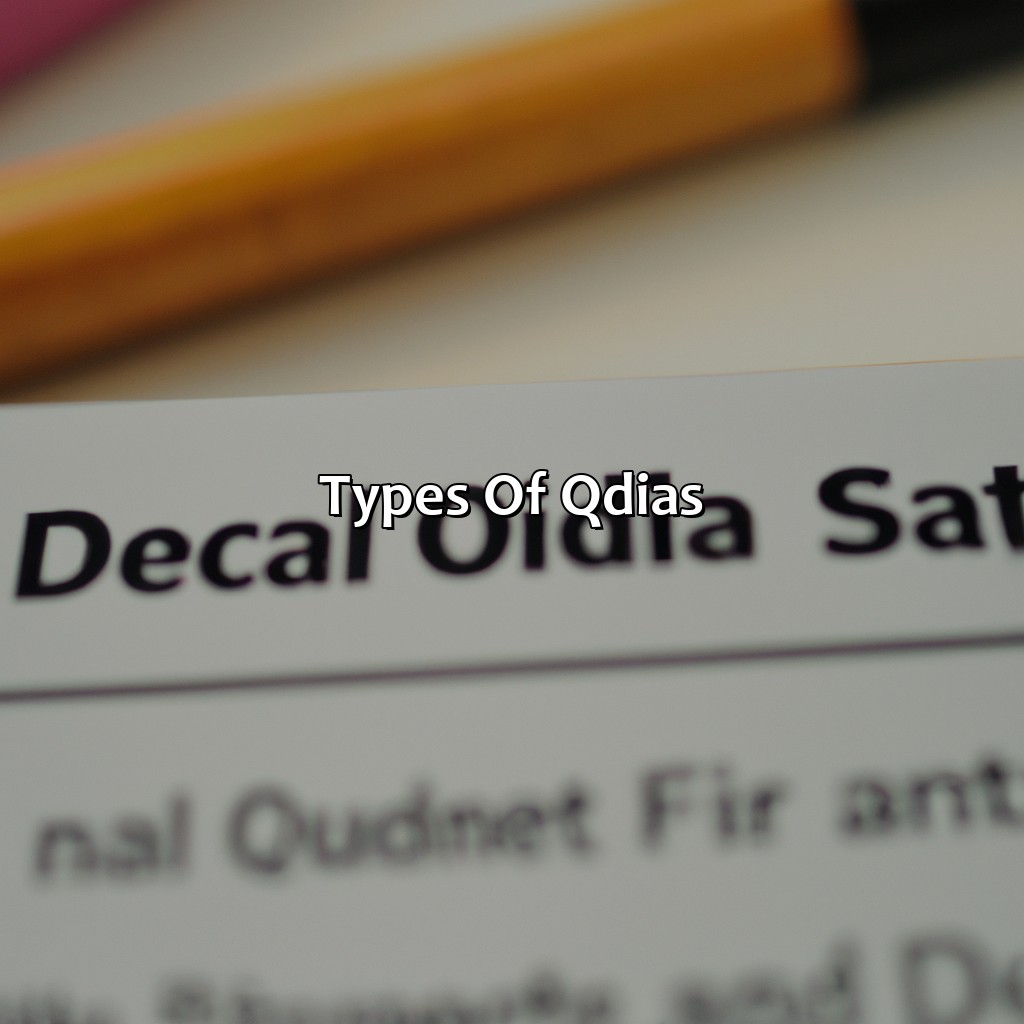What Is A Qualified Default Investment Alternative?
Key Takeaway:
- Qualified Default Investment Alternatives (QDIAs) are investment options offered in retirement plans to help employees who are unable or unwilling to choose their own investments. QDIAs are important because they provide a default investment option for those who may not have the time, knowledge, or interest to actively manage their retirement savings.
- There are three types of QDIAs: Target Date Funds (TDFs), Balanced Funds, and Managed Account Funds. TDFs are the most commonly used QDIA and invest in a mix of stocks, bonds, and other assets that become more conservative as the target date approaches. Balanced Funds invest in a mix of stocks, bonds, and other assets based on a predetermined asset allocation, while Managed Account Funds offer a personalized investment strategy based on individual goals and preferences.
- Selection criteria for QDIAs include investment objectives, diversification, and fees and expenses. It is important for employers to choose QDIAs that align with the investment needs and goals of their employees, while also considering the fees and expenses associated with each option.
Are you looking to invest in retirement plans but don’t know where to start? A qualified default investment alternative (QDIA) could be a great option. You’ll gain insight on the basics of QDIA, and the potential it holds for your retirement.
Importance of QDIAs
QDIAs play a crucial role in retirement investment planning. They offer a hassle-free approach for sponsors to provide diversified investment options to plan participants. These options are selected via a qualified process, ensuring the participants’ investment preservation. QDIAs are essential for plan sponsors because they help manage fiduciary responsibilities.
When sponsors fail to execute their fiduciary responsibilities, they can be held liable for any losses incurred by the plan participants. With QDIAs, sponsors can satisfy their duty of prudence and prudently manage plan assets while providing plan participants with investment alternatives. QDIAs are also essential for plan participants who may not have the knowledge or experience to make wise, investment decisions. They offer investment innovations that increase the chances of achieving desired retirement outcomes.
It is essential to note that some QDIAs allow plan sponsors to offer different investment alternatives and ultimately develop an investment strategy that serves the needs of their plan participants. The QDIA regulation ensures the plan participants’ interests come first by guaranteeing that decision-making processes for investment alternatives are informed by various factors like investment fees and performance history.
A retirement planning firm recently reported that a QDIA saved the retirement income of a plan participant who would have experienced what seemed like a significant loss due to the effects of the 2008 financial crisis. The participant had invested the entirety of their savings in the stock of the company they used to work for. Therefore, QDIAs are an essential investment solution that provides a safeguard for retirement planning and helps plan sponsors meet their fiduciary responsibilities.

Image credits: retiregenz.com by Adam Woodhock
Types of QDIAs
Types of QDIAs refer to various investment choices available to participants who fail to make investment selections. The options include default investment options such as target-date funds, balanced funds, managed accounts, and others.
A table illustrating the different types of QDIAs is as follows:
| Types of QDIAs | Description |
|---|---|
| Target-Date Funds | Investment option based on the participant’s retirement age and investment horizon |
| Balanced Funds | Investment option that offers a blend of stocks, bonds, and other assets with an appropriate risk level |
| Managed Accounts | Investment option that involves professional management of the participant’s portfolio |
| Balanced Funds with a Glide Path | Investment option that adjusts allocations between stocks and bonds based on the participant’s investment horizon |
| Default to Stable Value | Investment option that offers the lowest investment risk |
| Other Qualified Default Investment Alternatives | Investment options that meet specific criteria set forth by the Department of Labor |
It’s worth noting that the Department of Labor mandates the criteria that QDIAs must meet, including providing adequate diversification and controlling investment risk.
A study by the Plan Sponsor Council of America found that 54% of plans use target-date funds as their default investment option.

Image credits: retiregenz.com by Joel Woodhock
Selection Criteria for QDIAs
To determine the suitable Qualified Default Investment Alternative (QDIA), certain criteria are taken into account:
- The QDIA should consider the age and retirement goals of potential investors.
- It should have a measured level of risk to ensure stable returns.
- The expenses associated with the QDIA should be affordable for investors.
- It should provide diversity in investment options to minimize risk.
- The QDIA must comply with all regulatory requirements.
It is important to note that the selection criteria for QDIAs should be carefully considered to ensure successful retirement investments.
A study by Vanguard found that QDIAs are increasingly popular among retirement investors, with around 13,000 plan sponsors using them in 2018.

Image credits: retiregenz.com by Adam Arnold
Five Facts About Qualified Default Investment Alternatives:
- ✅ A Qualified Default Investment Alternative (QDIA) is a type of investment option offered in retirement plans for participants who do not make a specific investment election. (Source: Investopedia)
- ✅ QDIAs were established by the Pension Protection Act of 2006 as a way to protect plan participants from investment losses due to inaction or poor investment choices. (Source: PlanSponsor)
- ✅ QDIAs must meet certain requirements, including diversification, fiduciary oversight, and the use of professionally managed portfolios or target-date funds. (Source: IRS)
- ✅ Many retirement plan participants default into a QDIA because they do not have the knowledge or time to choose their own investments. (Source: Forbes)
- ✅ QDIAs can provide participants with a suitable and cost-effective investment strategy as they save for retirement. (Source: Vanguard)
FAQs about What Is A Qualified Default Investment Alternative?
What is a qualified default investment alternative?
A qualified default investment alternative (QDIA) is a type of investment that is typically used in defined contribution plans, such as 401(k)s. A QDIA is designed to provide a diversified investment portfolio for plan participants who have not made their own investment choices.
What are the benefits of a qualified default investment alternative?
The main benefit of a QDIA is that it helps ensure plan participants have a diversified investment portfolio, even if they do not actively choose their investments. This can help minimize the risk of losses and maximize returns over the long-term.
What are some examples of qualified default investment alternatives?
Some examples of QDIAs include target-date funds, balanced funds, and professionally managed accounts. These types of investments are designed to provide a mix of assets, such as stocks, bonds, and other investments, that are appropriate for a participant’s age, risk tolerance, and investment goals.
How is a qualified default investment alternative chosen?
A QDIA is typically chosen by plan sponsors, such as employers or plan trustees, with the help of a financial advisor or investment consultant. The selection process may involve an analysis of the needs of plan participants, as well as an evaluation of various investment options.
What are the fiduciary responsibilities associated with a qualified default investment alternative?
Plan sponsors and trustees have a fiduciary responsibility to ensure that the QDIA selected is appropriate for plan participants and that the investment provider is acting in the best interests of the plan. This may include ongoing monitoring and periodic reviews of the QDIA and its performance.
Can participants opt out of a qualified default investment alternative?
Yes, participants always have the option to choose their own investments or opt out of the QDIA entirely. However, plan sponsors may need to provide education and guidance to help participants make informed decisions about their investment choices.
